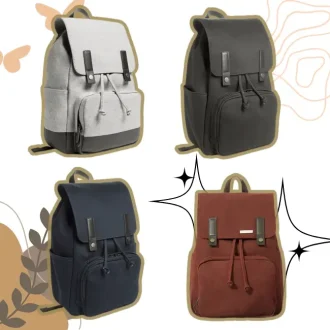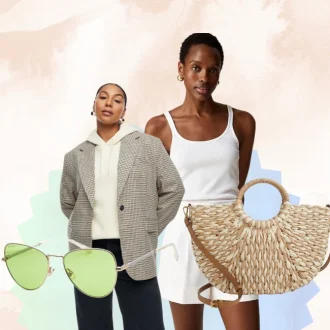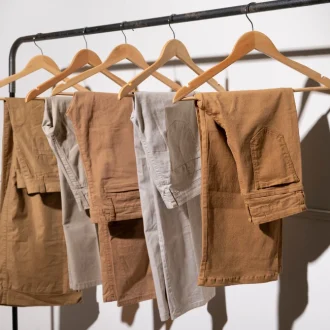- IN THIS ARTICLE
Sustainable minimalism is not only a trend but a total change of perspective in the world of fashion.
Essentially, it mixes the chic of minimalism with the morals of sustainability, making up a closet that respects our planet and your timeless style. It’s the kind of philosophy that preaches less is more in possessions and environmental impact.
Sustainable minimalism takes it a step further with the coordination of a chic, coherent outfit to commit to a life full of durability, as opposed to disposability.
For those new to the concept, sustainable minimalism builds upon the foundations of minimalist fashion, which you can explore in greater detail in our comprehensive Guide To Minimalist Fashion: Aesthetic And Simplistic Style Tips.
Join in this journey of how this thoughtfulness in fashion could transform your closet for a change we wish to see in a sustainable future.
The Philosophy of Sustainable Minimalism
Sustainable minimalism is a philosophy that binds two critical lifestyle choices. The first is minimalism, with the dictum “less is more,” while the latter is sustainability, concerned with an ethical demand for our use of the environment in such a manner that it can be sustained into the long term without degradation and loss of life quality.
Sustainable minimalist living includes so much more than just cutting down on the number of possessions. A sustainable minimalist lifestyle encourages decision-making in an even more thoughtful way, reflecting respect for the environmental and social systems.
Ethical Underpinnings
At its core, sustainable minimalism speaks to this urgency of infusing ethics into your day-to-day life, mostly in the world of fashion. It directly opposes the conventional model of consumerism, with the one that preaches every purchase being intentional and every item being treasured.
This philosophy encourages us to consider the lifecycle of products we acquire, produced from production to disposal, and ensure that every good produced or consumed creates a minimum negative impact on the environment. This empowers consumers to choose products that are sourced and produced sustainably, thus supporting fair labor practices and reduced exploitation of resources.
Environmental and Social Benefits
The environmental benefits of a minimalist and sustainable lifestyle are profound. Reducing consumption leads to less waste, decreased demand for raw materials, and a smaller carbon footprint.
Socially, it promotes a culture of fairness and equity, supporting brands that prioritize worker rights, fair wages, and safe working conditions.
Embracing this lifestyle can lead to significant community and global benefits, such as less pollution, conservation of natural resources, and a reduction in the exploitation of vulnerable populations.
Principles of Sustainable Minimalist Fashion
Sustainable minimalist fashion revolves around principles that ensure clothing consumption is responsible and conscious. These principles not only advocate for environmental stewardship but also enhance personal satisfaction through quality and design.
Core Principles
Quality before quantity: It’s just a decision between cheap, quickly destructible clothes, and expensive, durable ones. Encouraging investment in quality pieces, hence not having to replace things as often, and then reducing waste and consumption.
Long-Lasting Materials: The importance of sustainability in minimalism has to do with lasting materials that can stand the test of time, hence avoiding their replacement at short intervals. Generally preferred materials include organic cotton, hemp, and even recycled fabrics for their usually minimal impacts on the environment and long life.
Timeless Designs: Fashion in the sphere of minimal and sustainable fashion has to be timeless and not trendy. Classic designs ensure the clothes can be worn for many years and can even beat the fleeting fashion tendencies, commonly leading to wasteful consumption.
Making less waste and consuming fashion ethically
Through the applicability of such principles, sustainable minimalist fashion contributed to a very large reduction in the output of fashion waste. It discourages the cycle of purchase and discard that typifies fast fashion, encouraging approaches toward consumption that are more sustainable.
That is to say, it calls upon and encourages consumers to support those brands that have an amount of dedication from the source materials to the level of the manufacturing process, which may serve in decreasing the environmental impact but ensure that it is from the fashion industry.
Building a Sustainable Minimalist Wardrobe
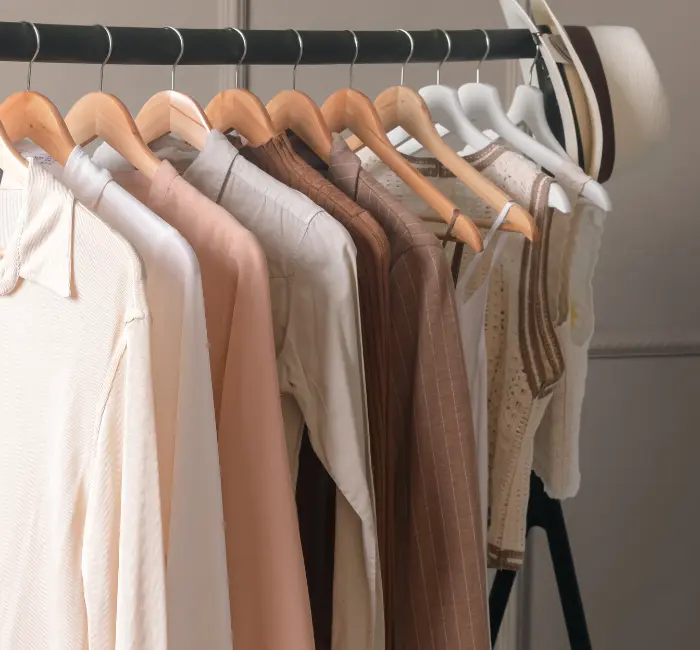
To make a minimalist wardrobe actually sustainable, its guiding principles are more than just the reduction in the number of your sartorial possessions. It involves the curation of clothes that are environmentally friendly while keeping versatility in style. Here is a structured approach to making wardrobe decisions with longevity in mind.
Step-by-Step Guide to Curating a Sustainable Minimalist Wardrobe
1. Assess Your Current Wardrobe: Take a look at your current wardrobe, everything has to start from there. Look at the items you are drawn to and those which you wear most of the time. This way, you will have a pretty good idea of how functional the clothing is and what your style might be like.
2. Define Your Needs: From the lifestyle you lead and the climate of the place, define for sure the types of clothing that are required for day-to-day running. This will enable you to know what goes and what stays.
3. Choose Quality over Quantity: Invest in quality items and pieces that are durably long-lasting. Look for well-constructed clothes that are going to last you longer than having to do a whole new wardrobe every three months.
4. Embracing Versatility: Only go for items that will be versatile enough to be worn with several others for completely different looks. Versatile pieces, like classic blazers, a good pair of jeans, or a simple dress, are some of the basics that should be found in a minimalist wardrobe.
5. Practice Responsible Disposal: Find a worthy home for unneeded items, and that can involve selling them or giving them away to charity. You could recycle rather than throw away.
Tips for Selecting Eco-Friendly Pieces
- Fabric Choices: I usually tend to go toward natural and organic fibers, which are ecologically less harmful, such as organic cotton, linen, hemp, and sometimes wool or even silk.
- Color Scheme: If your neutrals are what define your kind of style, then it becomes easy to match. It will ease outfit pairing and, above all, be timeless in fashion.
- Care Instructions: Use laundry that does not involve vigorous cleaning, therefore emitting fewer of your carbon gases while washing.
Choosing Sustainable Fabrics and Materials
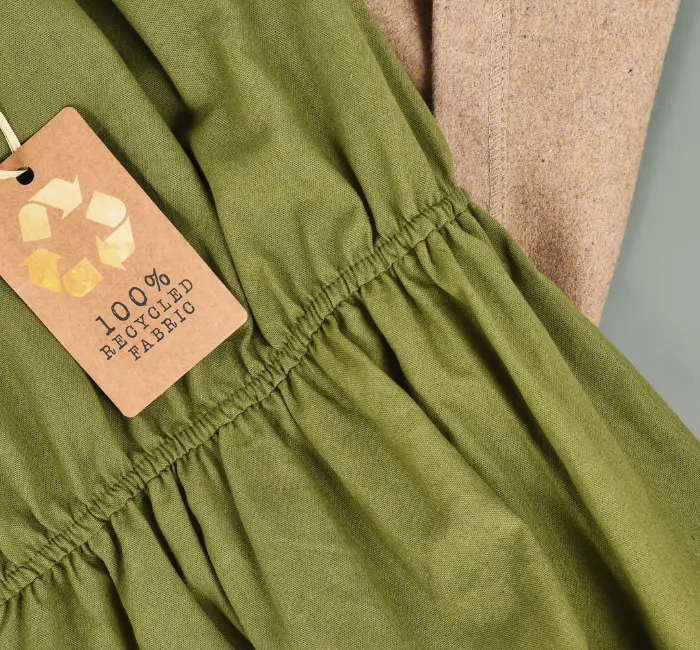
The kind of fabrics you pick goes a long way in determining just how harmful your wardrobe may be to the environment. Here are reasons your choices are a significant way of using eco-friendly materials and some of the leading examples in fabric usage sustainability.
Importance of Eco-Friendly Materials:
- Reduced Environmental Impact: In most cases, sustainable fabrics require less water, fewer amounts of chemicals, and less waste than conventional fabrics.
- Biodegradability: Most biodegradable materials are sourced from ecologically friendly, renewable sources, thus not staying as waste in landfills.
- Support Ethical Practices: By choosing sustainable fabrics, one would likely be supporting fair labor and ethical manufacturing processes.
Examples of Sustainable Fabrics:
- Organic Cotton: It is the crop of cotton, devoid of harmful chemicals and pesticides.
- Recycled Polyester: This is a fabric made from recycling plastics used in the making of activewear and outerwear.
- Tencel: Known to be very soft and eco-friendly in processing, Tencel is considered one of the top choices by people when it comes to sustainable clothing.
Leading Brands in Sustainable Fabric Usage:
- Patagonia: Renowned for a fierce commitment to sustainability, they use organic cotton and recycled materials in most of the products.
- Eileen Fisher: Sustainable fashion leader Eileen Fisher presents organic and recycled collections.
- People Tree: People Tree is characterized by its fair trade and use of organic cotton for collections, alongside other dyes that are environmentally responsible.
Maintenance Tips for Wardrobe Longevity
Making sure that your clothes live longer lives contributes to the economy and environment, too. Here is how you can increase the life of your clothing in a way that contributes to sustainability with the least amount of waste.
Caring for Garments:
- Proper Washing: Use cold water for washing to reduce energy consumption and keep from damaging the fabric. Use gentle detergents friendly to the environment, as they are not strong on the fabric and nature.
- Minimizing the use of a dryer is advised, if possible. Air drying your clothes will be more efficient in conserving the fabric and energy. If at all there is a need to use the dryer, then one should go for low heat settings.
- Following Care Labels: Always check your garments’ care labels for appropriate washing and drying methods to help maintain each piece’s quality and longevity.
Storage and Repair:
- Proper Storage: Place your clothes in a clean and dry place. Use padded hangers and breathable garment bags for items that need to maintain their shape or are delicate.
- Regular Repairs: The most basic sewing skills can prolong the life of a garment by attending to any necessary repairs as they arise, including those related to loose buttons or minor tears. The most basic sewing skills will be useful for these quick fixes.
- Seasonal Rotation: Rotate your wardrobe seasonally, and properly store off-season clothing. This way, your current wardrobe will not only be more accessible, but the ones out of sight will be protected from overuse and damage.
Sustainable Shopping Practices
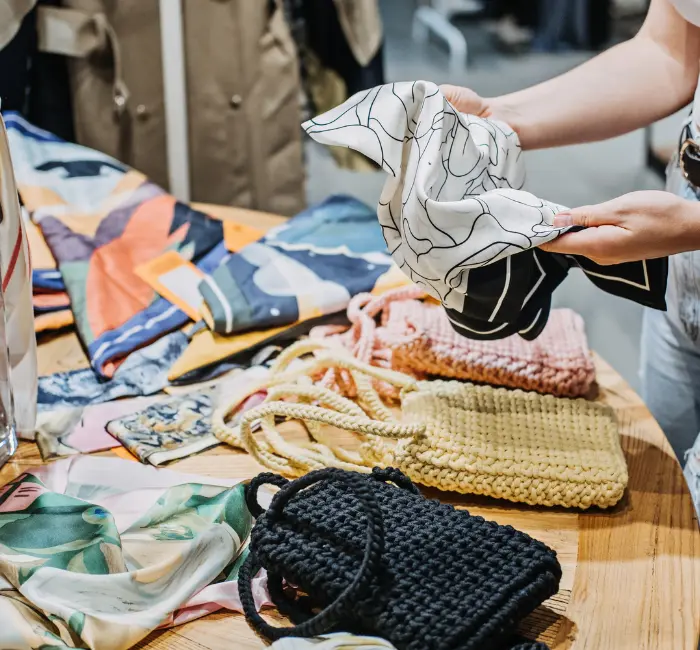
Shopping sustainably is crucial for reducing your fashion footprint. Here are ways to ensure that your shopping habits align with ethical and sustainable practices.
Choosing Ethical Brands and Product Origins
Research Brands: Before purchasing, research the brand’s commitment to sustainability. Look for transparency in their sourcing and manufacturing processes.
Understand Product Origins: Know where and how products are made. Products made locally or with well-documented supply chains are often more sustainable.
Certifications: Look for certifications like Fair Trade, GOTS (Global Organic Textile Standard), or B Corp, which indicate higher standards of ethical and environmental responsibility.
Supporting Local and Artisan Producers
Buy Local: Purchasing from local designers and small businesses helps reduce the carbon footprint associated with long-distance transportation of goods.
Artisan Crafts: Supporting artisan products not only helps preserve traditional crafts but also ensures your purchases directly benefit local communities.
Transforming Fashion Habits
Changing your fashion consumption habits can have a significant impact on both the environment and your personal well-being.
Moving Away from Fast Fashion
Quality over Quantity: Buy less but of a better quality, since such pieces will last much longer compared to cheaply and quickly made stuff.
Capsule Wardrobe: Why not have a capsule wardrobe? It focuses on a very small number of multi-purpose, exchangeable pieces you really love.
Mental and Emotional Benefits
Reduced Clutter: A minimalist wardrobe helps in the reducing level of clutter in the living area, giving a clearer mind and low-stress advice.
Aligning with Values: Wearing clothes that align with your ethical beliefs can increase satisfaction and confidence. You’ll have an overarching sense of well-being, knowing that your wardrobe doesn’t exploit labor or the environment.
Conclusion
Adopting this kind of sustainable minimalism in fashion not only minimizes the impact on the environment but also enhances well-being by simplifying your wardrobe.
Quality is at the core of every piece in your closet, ethical practice supports and reflects your values and style.
Start today, check your wardrobe, and choose sustainable material support brands caring for our planet. The big change starts small like you. Make fashion a force of good, and it will thank you back.


